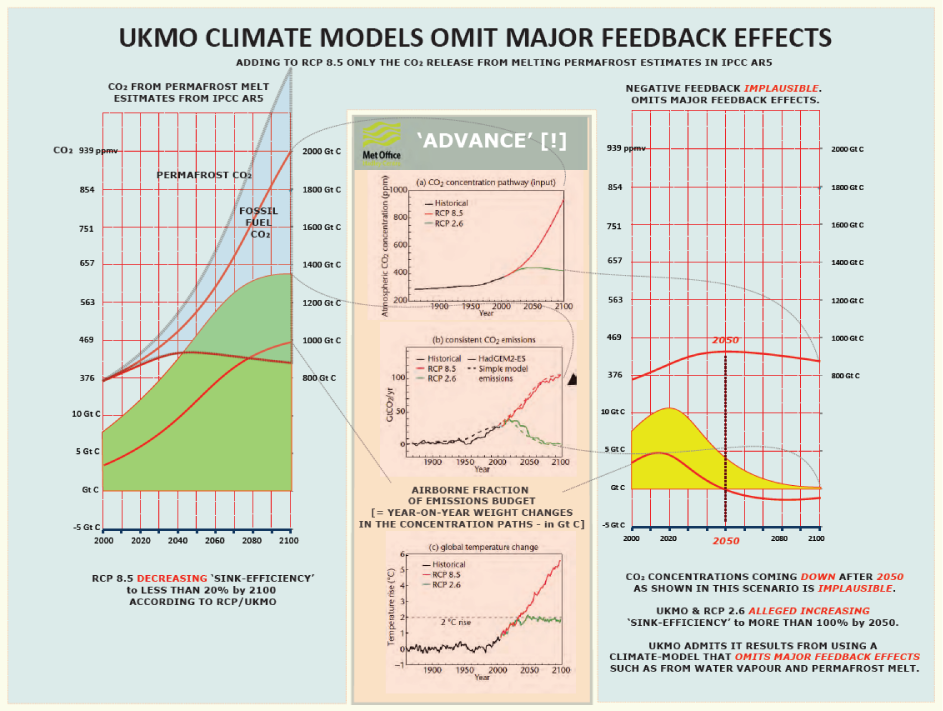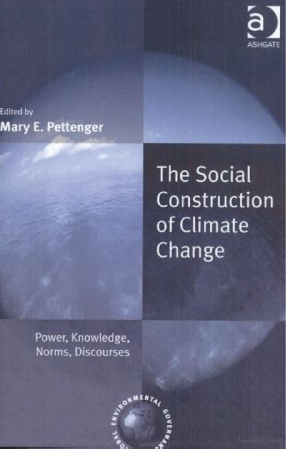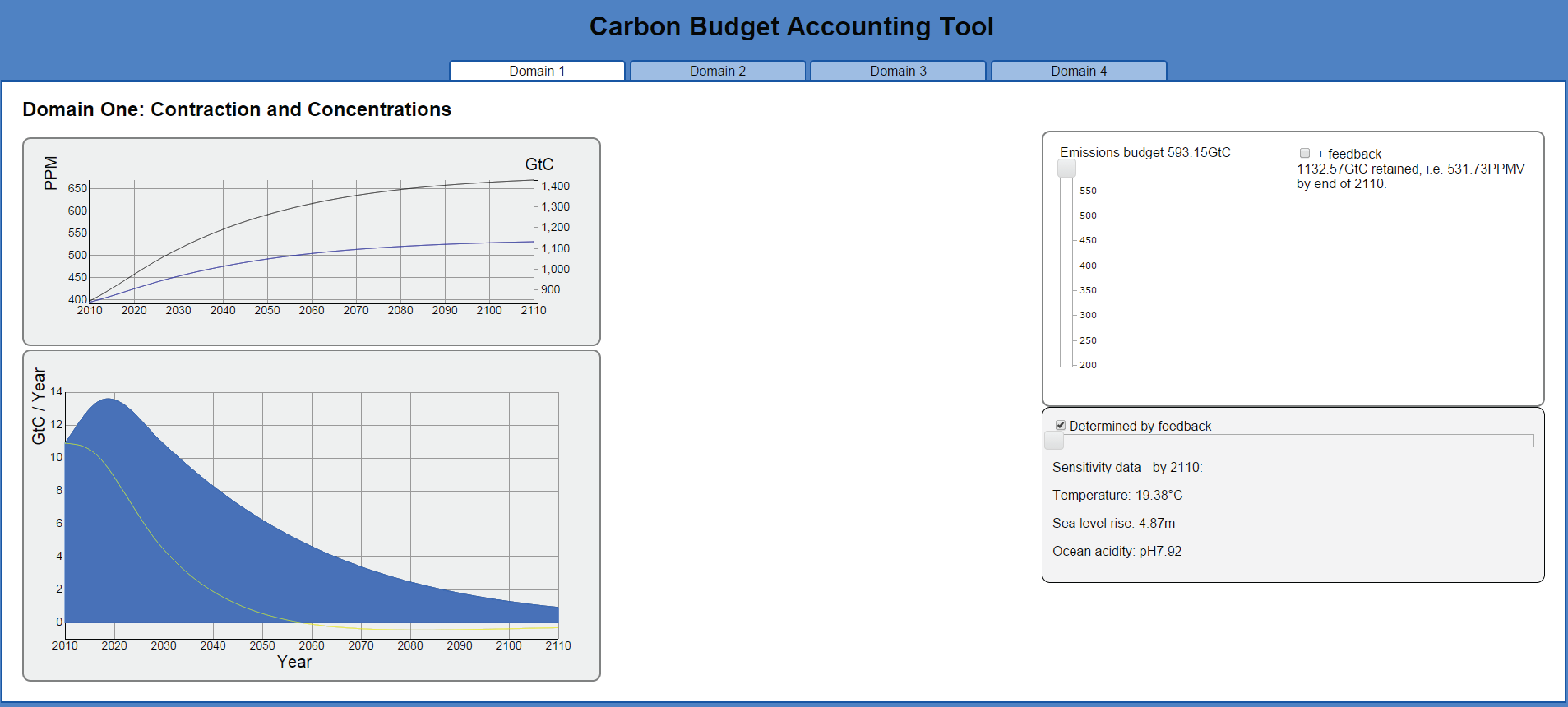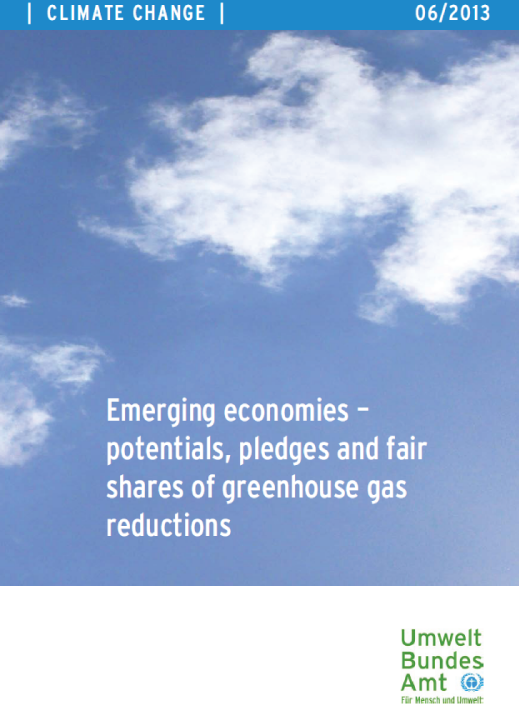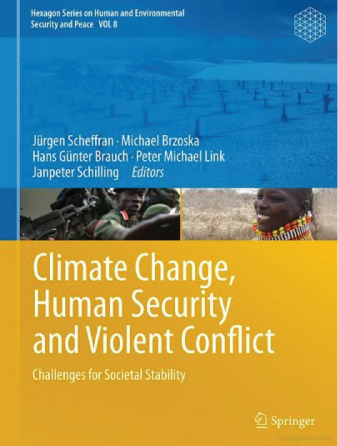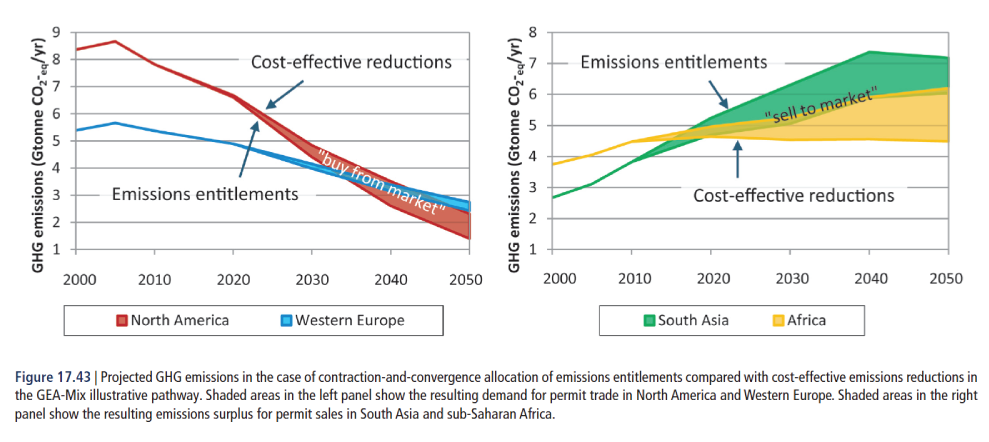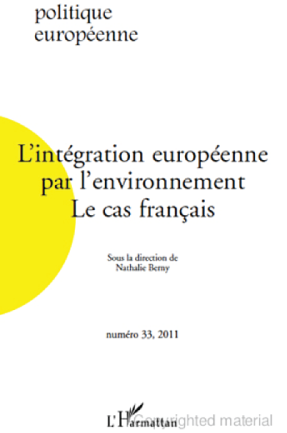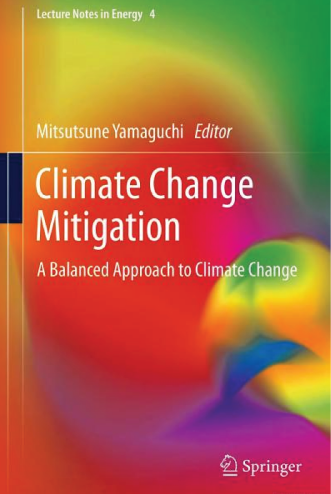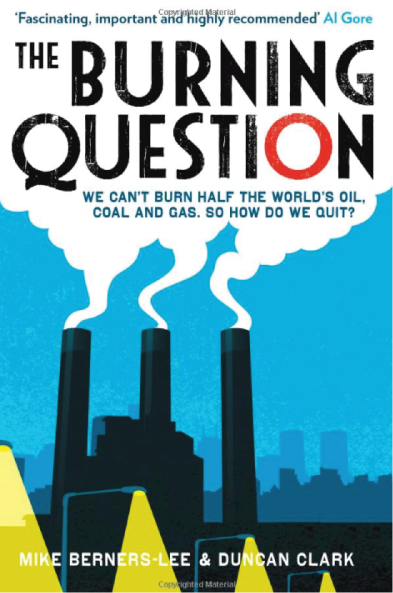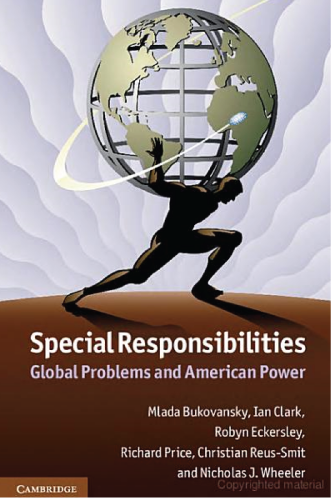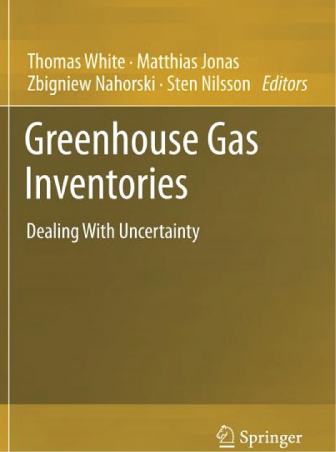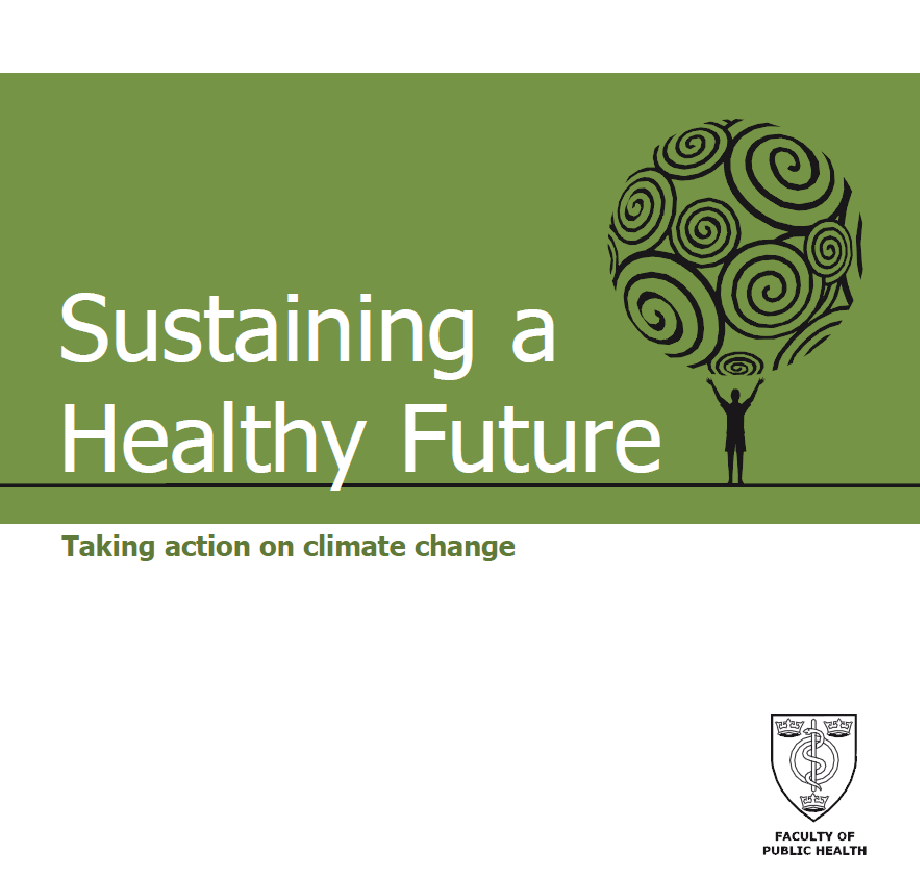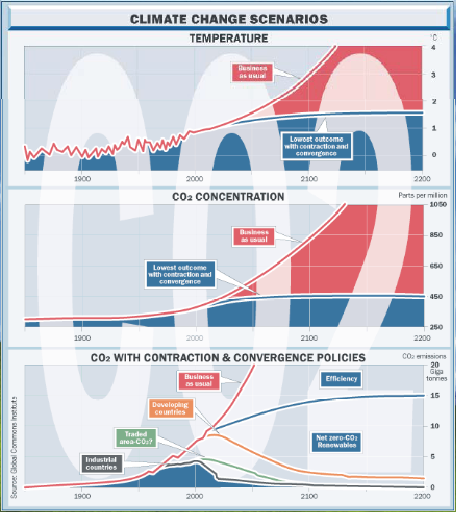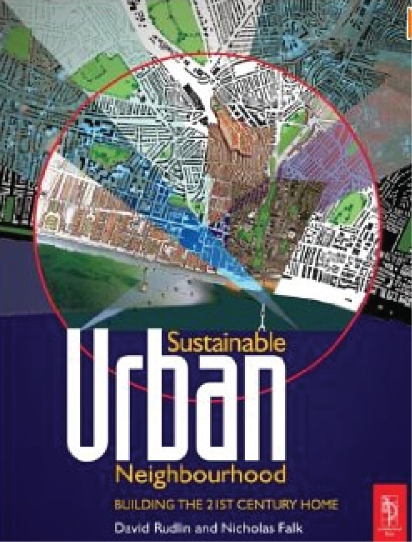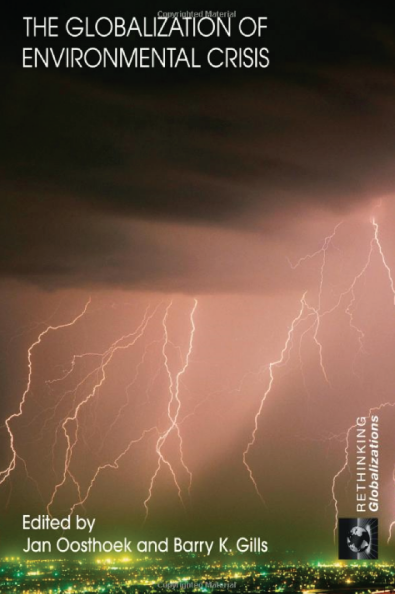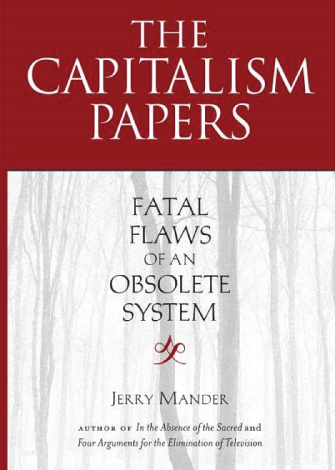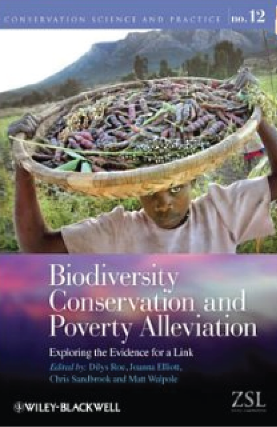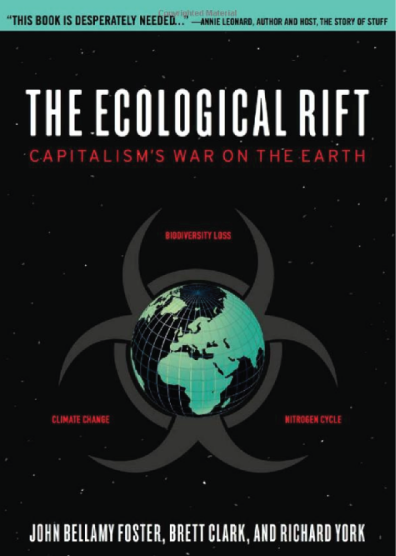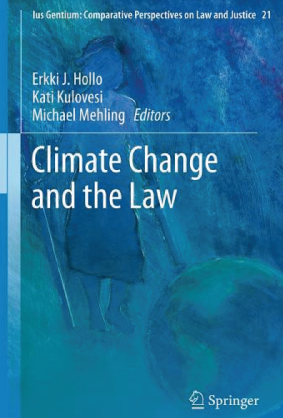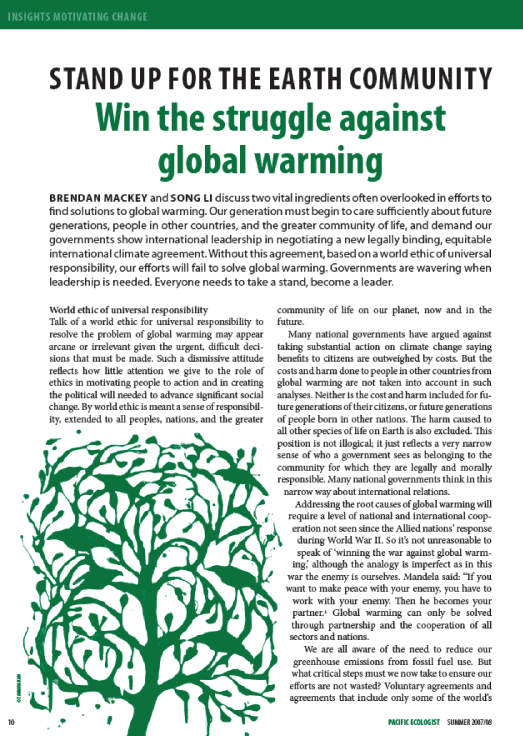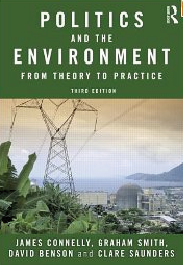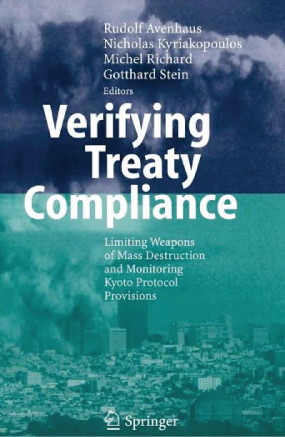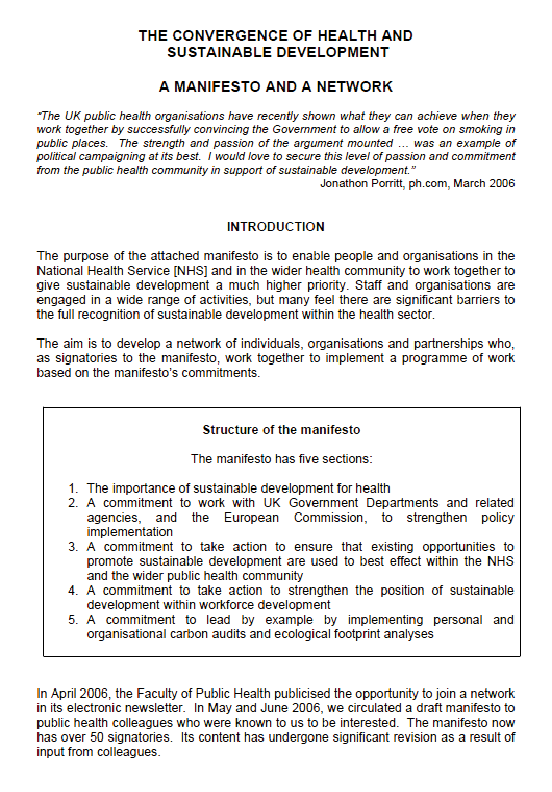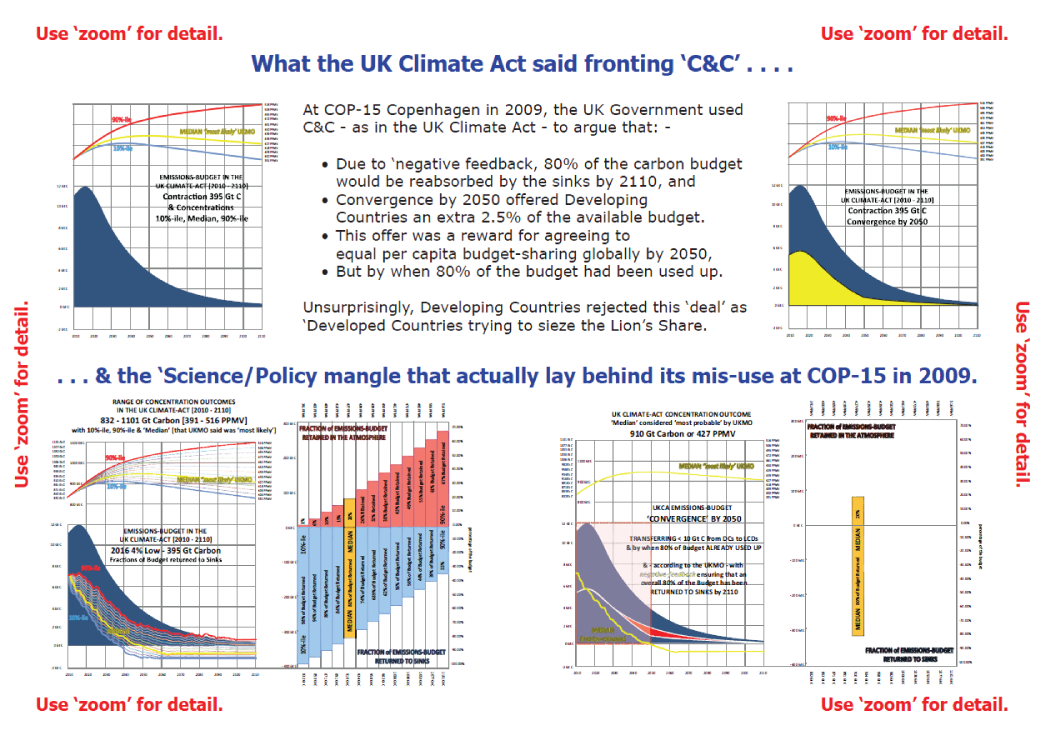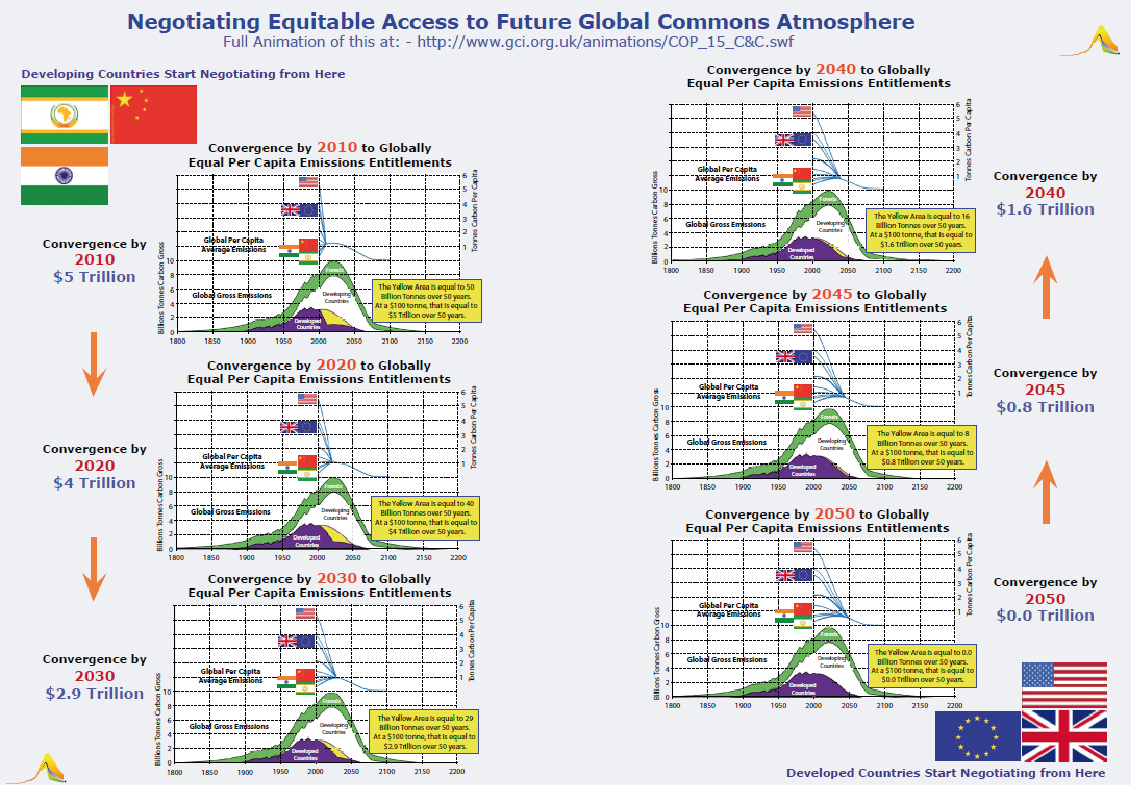If you are using FireFox please 'Download ' the file. The FireFox Broswer garbles it.See ADVANCE UKMO admits that
- understanding the interactions within the Earth system is critical. However,
- they go on to frankly admit that they don't and that
- they don't know how to model them and that
- then leave them out of their models and their output going into IPCC AR5 WG1 [was due in 2013 but is now delayed . . . ]
"Thanks to the latest generation of Met Office models, we already understand more about how man-made emissions of greenhouse gases are linked to global and regional temperature during the 21st century. Our results and, therefore, our conclusions are more robust and this has strengthened our confidence in results from simpler models. The latest models also allow us to add more information about complex interactions involving different pollutants — information that is critical for answering specific policy questions. Results from the new model are now emerging and will be fed into the next IPCC Assessment Report to be published in 2013.
We have looked at two examples of important Earth system processes: those involving black carbon aerosols and ozone damage to plants. Controlling black carbon emissions may be a way for policymakers to regulate global warming over the short-term. Ground-level ozone is a greenhouse gas in its own right and affects CO2 through its impact on plants. Its lifecycle is strongly coupled to other air pollution species, such as NOX. Our results now suggest that there may be benefits in treating climate change and air quality policy together.
We will continue to improve the representation of processes included in our model. There are also a number of processes not currently included that could potentially have a major impact on the degree of warming for a given emissions scenario, quite apart from their impact on local and regional climate. Some of these processes have been discussed here and we are actively working on including them in the model:
- the impact of ozone on plants reduces their ability to take up carbon. Given their major implications for international technology and economic development, policy decisions on climate change must be underpinned by the best possible evidence.
- The deposition of black carbon on snow changes the reflectivity of the surface leading to more warming at high latitudes.
Other processes are less well understood but are actively being researched with a view to including them in future models:
- The ability of plants to take up carbon may be limited by the supply of nitrogen available naturally, but may be enhanced by man-made sources of nitrogen. Climate change itself may also increase available nitrogen and stimulate plant growth.
- The thawing of permafrost may lead to large amounts of carbon release, but these processes are not well understood.
- Dynamic ice processes could speed up freshwater supply from glaciers into the ocean.
- The processes that affect methane in the Arctic Ocean could lead to increased methane release (the science is poorly understood so may take longer to include in models).
The international science community is working hard to understand and narrow the uncertainties in future climate projections — and it is doing this primarily through model intercomparison projects, comparison with observations, and the synthesis of results by the next IPCC report.
Understanding the interactions within the Earth system is critical.
26 April 2013 - "I agree to support the C&C Proposal." Associate Professor Mary Pettenger Western Oregon UniversityHello
I agree to support this proposal.
Dr Mary Pettenger
Western Oregon UniversityBack to UNFCCC Submission
Back to Signatory List
Another echo is to be found in 1995 in the controversy over economic dimensions in chapter 6 in the IPCC's second assessment report (SAR). The chapter was originally drafted as a comprehensive overview of climate change damages. Pearce's model (Pearce et al 1996) included differential values for lives in North and South to calculate global cost/benefit analysis of emissions abatement. CJ:ESIN ( 1995) reports that early drafts of the chapter led to contentious debates at official presentations as well as on the ecological economics mailing list which included a formal protest endorsed by hundreds of scientists and researchers. The chapter was rejected at a meeting in Geneva and the key elements of the rewritten chapter were not included in the summary for policymakers (a key part of IPCC's assessment reports). Well-articulated objections to the chapter were raised by Masood (1995) and by Meyer (1995) and his Global Commons Institute, who out of this developed the notion of "contraction and convergence" (C&C). The C&C framework models how the trajectory of emissions would travel if we start from a status quo emissions distribution and move towards per capita equality (convergence) while reducing emissions to an overall level which is a politically set goal to achieve climate stability (contraction). It is interesting to note the range of actors who have expressed support for C&C They are able to do this precisely because the framework articulates concerns of the South for equal per capita emissions with US/Western concerns for "meaningful commitments" from developing countries.
In some sense, the "equal per capita" position poses a challenge to territoriality in that it relates individuals (as humans) to the atmosphere as a global common. It establishes individuals' equal access and responsibilities according to universal principles. However, those individual CO2 contributions are actually calculated on the basis of national emissions and then divided by the number of people living in the state. Thus, in fact it is a territorially based "per capita position" that takes the emissions of the national community and divides by the population. Hence, the low Indian per capita level depends on the large amount of poor Indians with very low emissions, while the Indian middle class consumes carbon at or close to an OECD (Organisation for Economic Co-operation and Development) average. Thus the debates around justice, while being instinctively cosmopolitan and working in ethical terms alongside the scientific constructions of climate change as "global," in fact get drawn back to a statist account of rights. In the climate negotiations, the principle of "sovereign equality" is underpinning the agreed protocols for emission reductions. This is clearly reflected in the Kyoto Protocol where all Annex I panics agreed to reduce emissions by al least 5% from 1990 levels by 2008- 2012. 1990 was decided upon as the "base year" and a "cap" was put on past emissions. Thus in the dominant version, it is Americans (or other DECO states' members) that have in effect an a priori "right" to emit CO2 at the rate they do, and any collectively agreed proposals to limit emissions need to start from that rate of emission as the point of departure. In the contex.t of the climate negotiations, allocations based on past emissions is tellingly named "grandfathering." It is the grandfathers of a political community, who through past actions, have acquired a "status quo right" for the now living to continue to use the atmosphere in the way they want. This reflects the (now palpably patriarchal) master discourse of territorial sovereignty in two ways. First, the members of the political community in question are territorially defined and, second, they are justified in the claim that the community should accept any intervention in the way they choose to live their lives. The consequence of "equal per capita emissions," when the idea is put into concrete proposals, at least proposed by state negotiators, is that the scheme becomes mediated by the Southern state's right to negotiate on behalf of "its" people through the principle of non-intervention which means that the Indian state can conceivably argue for equal per capita emissions in international politics while rejecting a right of the international community to question the distribution of emissions within India.
The Social Construction of Climate Change: Power Knowledge Norms Discourses
edited by Mary E. Pettenger
26 April 2013 - C-BAT - "Very impressive; clear, transparent, versatile, opens up the whole process." Terry O'Connell
Very impressive. How can anybody object to the clarity, transparency and versatility from a negotiating point of view. It opens up the whole process, following on from the magic black boxes of the climate scientists and the economists. They are all necessary in their different roles in serving the ultimate policymaking process where the bets are placed on the wheel. I know its only work in progress but the Domain Swapping [touch icons] is very clever too.
Terry O'Connell26 April 2013 - "First step agree contraction. Second step agree Convergence." Emerging Economies Fair Shares of GHG reduction
Under Contraction and convergence (C&C) (GCI 2005; Meyer 2000), all countries participate in the regime with quantified emission targets.
- As a first step, all countries agree on a path of future global emissions that leads to an agreed long-term stabilisation level for greenhouse gas concentrations (‘contraction’).
- As a second step, the targets for individual countries are set in such a way that per capita emission allowances converge from the countries’ current levels to a level equal for all countries within a given period (‘convergence’).
The convergence level is calculated at a level that resulting global emissions follow the agreed global emission path. It might be more difficult for some countries to reduce emissions compared to others, for example, due to climatic conditions or resource availability. Therefore, emission trading could be allowed to level off differences between allowances and actual emissions.
However, C&C does not explicitly provide for emission trading. As current per-capita emissions differ greatly between countries some developing countries with very low per capita emissions, (e.g. India, Indonesia or the Philippines) could be allocated more emission allowances than necessary to cover their emissions (‘hot air’). This would generate a flow of resources from developed to developing countries if these emission allowances are traded.
Emerging economies – potentials, pledges and fair shares of greenhouse gas reduction by Hanna Fekete, Niklas Höhne, Markus Hegemann Ecofys Germany GmbH Timon Wehnert, Florian Mersmann Wuppertal Institute for Climate, Environment, Energy GmbH Marion Vieweg, Marcia Rocha, Michiel Schaeffer, William Hare Climate Analytics gGmbH26 April 2013 - "C&C Fair, efficient proposal to avoid dangerous climate change." Climate Change Security Conflict Scheffran et al
Fair and efficient burden-sharing in a global framework of climate justice would balance responsibilities and impacts among countries, satisfying both the 'polluter pays' principle and the 'ability-to-pay' principle. With the formula of 'common but different responsibilities', the UNFCCC has assigned different roles to industrialized and developing countries in climate policy. The challenge is to agree on collective emission targets that avoid dangerous climate change and will not be exceeded by humankind.
Several proposals have been made to balance emissions, including the Triptych approach to share emission allowances among a group of countries, the Contraction & Convergence concept with a joint target of per capita emissions, and the Common but Differentiated Convergence proposal, in which countries are free to select the emission path appropriate to their development.
Climate Change, Human Security and Violent Conflict: Challenges for Societal Stability
edited by Jürgen Scheffran, Michael Brzoska, Hans Günter Brauch24 April 2013 - "Transfers under C&C 2050." As seen by IIASA in their Global Energy Assessment Nebojsa Nakicenovich et al
Transfers under Contraction-and-Convergence Assumptions
This section explores the implications of an illustrative burden-sharing scheme for the allocation of future emissions rights and applies it to the GEA pathways. This burden-sharing scheme has been introduced in the literature as contraction and convergence by the Global Commons Institute and was subsequently used in many scientific analysis (see, e.g., den Elzen and van Vuuren, 2007. In essence, under such a scheme, all regions need to converge to a common per capita emissions entitlement by a specified date (2050). For regions with per capita emissions above the world average, this implies reductions (hence the term “contraction”) until the convergence criterion is fulfilled, but starting from very different initial conditions. For regions with per capita emissions below the world average, emissions can rise initially until they reach the world average. Thereafter, these regions also need to contract to the specified convergence level. The resulting emissions projections from the allocation scheme differ from the original GEA pathways, which assume that reductions take place where they are most cost-effective.
Global Energy Assessment - Towards a Sustainable Future
Nebojsa Nakicenovic et al IIASA18 April 2013 - "France, India & China promote C&C?" The French Case European Environment Integration Nathalie Berny
The reference to 'required fairness' reflects the UNFCCC global solidarity principles. France proposed per capita norms as a means to attain equity, a preference also shared by India and China. The French proposal had similarities with the 'contraction and convergence' model promoted by Meyer (2000). Viewing the atmosphere as a 'global commons', the Meyer model sought to distribute national obligations on the basis of international and intergenerational equity. By 'convergence' is understood the long-term transition to common emission levels through substantial cuts on the pan of rich nations, whilst allowing the poorest nations to increase their emissions. The 'contraction and convergence' school of thought has found considerable favour among international non-governmental organisations (NGOs), who called for greater global solidarity.At the same time, a common per capita target for industrialised countries would be advantageous for France (Godard, 1997= 39). Prior to Kyoto, a narrow framing of the national interest was evident in the French negotiating position which offered merely to contain emissions at below two metric tonnes of carbon per capita per year by woo – a level some 10 percent higher than in 1990 (lEA . 1996: 74). However, emissions per capita did not become an international norm because the implications were too demanding for industrialised nations. As second best, France argued during the negotiation of the I998 burden-sharing agreement (which programmed an 8 per cent reduction in EU-t 5 for the 2008- 12 commitment period defined by the Kyoto Protocol) that, given past performance, stabilising GHG emissions at the '990 level of 549.34 M [CO, was enough. The stabilisation target was in contrast to the ambitious cuts accepted by Germany (2 1 %) and the UK (12.5 %), France had raised expectations by choosing to highlight equity considerations, but finally refused either per capita or aggregate emissions reduction. The difference with Meyer's 'contraction and convergence' model lay in promoting convergence by others, without volunteering further contraction by France.
L'intégration européenne par l'environnement: Le cas français
Nathalie Berny18 April 2013 - "Estimates determined using logical C&C Assumptions." Climate Mitigation, Balanced Approach M Yamaguchi
An international agreement on emission reduction targets must be a pledge-and-review type agreement, even if such targets become binding later. No rigid methodologies for evaluating the pledged reduction targets for each country are required, but it is necessary to base the comparative emission reduction levels among countries on some equity criteria for the review process. The estimates of the allowable emissions for the world’s countries in this paper were determined using relatively logical assumptions on ‘Contraction and Convergence’ of per capita emissions avoiding criteria entailing significant subjective assumptions, using a state-of-the-art model having high technological and regional resolution for clear cost equity-based criteria. Uncertainties still exist; however, the estimates are very important in discussions on the sharing of emission reductions among countries at international negotiation.
Climate Change Mitigation - A Balanced Approach
Mitsusune Yamaguchi18 April 2013 - "C&C - a better candidate." The Burning Question Lee and Clark
A better candidate might therefore be a global cap-and-trade scheme in which tradable permits for the production of fossil fuels are distributed to national governments according to a simple but negotiable formula such as contraction and convergence. In this model, the number of carbon permits would be fixed in advance for each year or compliance period, limiting total fossil fuel use in line with an agreed global carbon budget. Additional permits could be made available to any company demonstrably and safely putting carbon dioxide back into the ground, kick-starting a major new effort on carbon capture technology.
The Burning Question: We Can't Burn Half the Half the World’s Oil, Coal and Gas, so how do we quit?
Mike Berners-Lee, Duncan ClarkInteresting to see that Duncan Lee has chosen the Justice Without Vengeance of C&C.
Prior to this book he was minded to consider the Greenhouse Development Rights idea, which is certainly justice with a vengeance.
This is something the 350.org campaign should consider again. GDR demands negative emission entitlements for the US by 2025.
This extreme demand is something the US Senate and People will never agree to.
Its the equivalent of demanding they commit suicide so India and China can grow even more than they can with C&C.
16 April 2013 - "Right to Development recognized in popular C&C model." Global Responsibilities and US Power Bukovansky et al
The significant differences in responsibility, capability and vulnerability on either side of the Annex 1/non-Annex I divide continue to serve as a bone of contention. Indeed, if we return to each of the key words in Article 3(1) of the UNFCCC - 'equity', ' responsibilities' and 'capabilities' - it is clear that there is considerable scope for different interpretations which have been exploited by both developed and developing countries.
For example, equity has been interpreted to include a right of developing countries to develop, an equal right of individuals to a sustainable livelihood or a right to a certain sustainable portion of atmospheric space. This is reflected in the popular model of contraction and convergence - See A. Meyer, Contraction and Convergence: The global solution to climate change (Dartington: Green Books, 2000).
Special Responsibilities: Global Problems and American Power
Mlada Bukovansky, Ian Clark, Robyn Eckersley, Richard Price, Christian Reus-Smit, Nicholas J. Wheeler
15 April 2013 - "The widely discussed C&C approach." Greenhouse gas inventories Matthias Jonas, IIASA
This situation would be different if the non-uniformity of the emission limitation or reduction commitments were the outcome of a rigorously based process resulting in a straightforward rule that applies equally to all countries, as would be the case, for instance, under the widely discussed contraction and convergence (C&C) approach. Under such conditions, it would be the undershooting that matters, not the modified emission limitation or reduction target.
Greenhouse gas inventories edited by Matthias. Jonas, Thomas M. White
15 April 2013 - "C&C promotes justice in a practical, equitable, precautionary way." Support & tribute from J Maxson Permavegan
Continuing the Conversation with Aubrey Meyer and Friends of Global Commons Institute
Posted on April 14, 2013by Jonathan W. MaxsonDear Aubrey Meyer at Global Commons Institute:
"I support the Contraction and Convergence submission from GCI to the UNFCCC to promote climate justice in a practical, equitable and precautionary way. Please add my name to the list of support for the GCI proposal as Jonathan W. Maxson, MSW, USA."
Words are inadequate to express how important your work on Contraction and Convergence (C&C) has been to me over the last two years. Music, mathematics and the sacred geometry of nature must all be woven into the acknowledgement, and that is why I find myself regularly cycling back to a public promotion of this brilliant multimedia video as the highest praise I can offer . . . .
15 April 2013 - "C&C - a popular idea." Understanding the Environment and Social Policy, Tony FitzpatrickBy contraction we mean the shrinking of carbon emissions over time; by convergence we mean that the amount of carbon emitted by developed nations falls as, for a time, that of developing nations continues to rise so that crucial social issues, for example, poverty, can be addressed.
One popular idea concerns 'contraction and convergence'. The world can only afford to emit x tonnes of carbon in anyone year. Therefore, we should divide x by the number of people on the planet during that year and whatever figure that calculation generates represents a 'carbon allowance' for each individual.
Obviously, the value of x depends on the sustainability targets and timelines we select, with fewer emissions being permitted ill later decades. Also, countries with lower per capita emissions than x arc allowed to emit morecarbon until x is reached, in contrast to developed economies that have to initiate cuts to descend towards x. Countries therefore converge on one another as, over time, overall global emissions contract.
To simultaneously address the imperatives of poverty and environmental sustainability a dual-track strategy is recommended. Until they reach a certain basic standard of wealth, the poorer countries of the South are permitted to opt out from international agreements that mandate carbon reduction. Anthony Giddens describes this contraction and convergence principle as 'a necessary point of connection between the two types of development.
Understanding the Environment and Social Policy
edited by Tony Fitzpatrick12 April 2013 - "C&C, sensible clearly articulated policy for stable climate." Health Practitioner's Guide to Climate, J Griffiths et al.
Contraction and Convergence: A Policy Framework for a Stable Climate
Contraction and Convergence (C&C) is a simple, science-based starting point for an international agreement on reducing greenhouse gas emissions, based on the principles of justice and equity (Global Commons Institute, 2008). The concentration of greenhouse gases in the atmosphere is increasing. The amount of carbon dioxide, the chief greenhouse gas, is now higher than at any time in the past 650,000 years. To ensure our future survival its concentration must be kept with in a safe upper limit.Carbon dioxide remains in the atmosphere for about a century and so in order to keep the atmospheric concentration below a safe limit, the amount of carbon dioxide that is emitted must fall. This is the contraction part. Establishing a safe upper limit is a technical mailer for climate scientists, but is likely to be at least an 80 per cent reduction by 2050, maybe more and maybe sooner. Agreement must be reached on where the upper limit should be set and a date by which this concentration should be achieved, and health practitioners need to advocate for this - see Chapter 5 for ideas on how. The question remaining is who should be allowed to emit greenhouse gases?
The atmosphere is a global good that all the citizens of the Earth must take responsibility for and must share. It follows that when it comes to parcelling out entitlement to emit greenhouse gases, everyone should have an equal share. Currently, the emission of greenhouse gases is far from fair. Average per capita carbon emissions of people in the United States are about 20 times higher than that of people in India.
Contraction and Convergence sets out a timetable for when per capita emissions will converge to equal per capita shares. The policy acknowledges that everyone has an equal right to the atmosphere, but recognizes that the wealthy world will need time to make the transition to fair shares. In the convergence phase, wealthy countries will have to make cuts even as emissions from poorer countries increase; but once per capita emissions converge, rich and poor alike will have to reduce emissions together. The policy also allows for emissions entitlements to be traded, which will again ease the transition to equal shares whilst ensuring that the safe upper limit is not exceeded.
Reducing Inequalities
Each year, worldwide, about 10 million children die before their fifth birthday (UN, 2009). They die because they are poor. Poverty condemns them to hunger, dirty water, poor sanitation, inadequate health care, and frequently their parents have had little or no opportunity of education. Contraction and Convergence is a policy response to climate change that simultaneously ensures ecological sustainability and justice for the poor. The carbon profligate will be required to pay the carbon thrifty for their unused rights to the atmosphere, thus assuring that the limits of environmental tolerance are not exceeded. In general the rich lead high-carbon lives and the poor lead low-carbon lives, so the policy of C&C should lead to a massive global redistribution of wealth. The lives of African children should not depend on the charitable whims of the wealthy world. C&C ensures that African children's rights to the atmosphere are bought from them rather than stolen.
C&C has the potential to redistribute wealth – and therefore reduce inequalities in health – between countries and within countries. Globally and nationally the carbon greedy would lose out and the carbon frugal would gain.We believe any framework must have the following three ingredients: -
- First and foremost, a scientifically assessed and globally binding commitment to cap and reduce carbon emissions to avoid atmospheric concentrations greater than 350-450 parts per million, to give ourselves a high probability of limiting average global temperature rises to 2_2.4°C.
- A mechanism for ensuring that resources are transferred to those countries where both living standards and fossil fuel use have been low. These resources include support to enable population stabilization, which is essential to the future health of the planet.
- An approach to development that, by giving people the capability of making low-carbon choices, minimizes greenhouse gas emissions.
The 'fair shares' Contraction and Convergence framework articulated by the Global Commons Institute, is founded on these three principles and is the most feasible present option. If other frameworks emerge that have these three ingredients, we must support them.
These policies require an international framework based on equity and justice, such as Contraction and Convergence. Policies to reduce greenhouse gas emissions could bring important reductions in health inequalities, heart disease, cancer, obesity, diabetes, road deaths and injuries and urban air pollution. Reducing animal product consumption in high-income countries is essential to allow increased consumption in poor countries without devastating climate impacts and will bring many health benefits. A rapid transition to a low-energy low-carbon transportation system involving substantially increased levels of active transport, namely walking and cycling, is essential and would also bring with it substantial health benefits: reducing obesity, improving air quality, reducing road deaths and injury and improving mental well-being. Finally, investment in and promotion of family planning could be one of the most cost-effective greenhouse gas reduction measures available, because much of the growth in emissions in coming years will be due to rising population numbers. Some policies to mitigate and adapt to climate change, such as more trees and green spaces, will also improve mental well-being.
Two hundred years ago the streets of London were awash with sewage. In 1858 the stench from the river Thames was so strong that MPs declared the House of Commons 'unusable'. Infectious disease was a deadly killer but it was the 'great stink' of 1858 that secured the funds needed to sort out London's sewage (Roberts, 2008). Policy on sewage did more to improve the health of Londoners than any health policy that century. Could responding to climate be the next great health advance?
We argue that putting in place public policies that prevent additional climate change presents unrivalled opportunities for improving public health. As we saw in Chapter 2, climate change and its effect on the ecosystem will have serious implications for health, so preventing runaway climate change is essential for a healthy and sustainable future. However, the economic and social policies that will need to be implemented in order to reduce greenhouse gas emissions will also bring substantial health improvements. Specifically, they could bring important reductions in inequalities in health, heart disease, cancer, obesity, diabetes, road deaths and injuries and urban air pollution.
These health benefits arise for three reasons:
- Because Contraction and Convergence, which is the fairest, most clearly articulated and most widely supported global framework for reducing greenhouse gas emissions, has justice and equity at its core and injustice and inequality are major determinants of human suffering and sickness (Global Commons Institute, 2008).
- Because climate change policies will impact in a health-promoting way on two of the most important determinants of health: human nutrition and human movement.
- Because climate change policy has to include population policy and the promotion of family planning has huge potential to improve global health (Cleland et al 2006).
Dear Aubrey,
Thank you for your message.
I support the Contraction and Convergence submission from GCI to the UNFCCC to promote climate justice in a practical, sensible, clearly-articulated way. Please add my name to the list of support for the proposal to the UNFCCC.
I have supported Contraction and Convergence in the publications:
"Sustaining a Healthy Future" (2008) (Faculty of Public Health) and "The Health Practitioner's Guide to Climate Change"
(Earthscan, 2009 - see p 89), for which I was lead editor.Best regards
Jenny
Jenny Griffiths OBE
Contraction and convergence
Contraction and convergence is a global framework – not yet adopted by the UK government – for tackling climate change through the equitable allocation of carbon rations. The ‘contraction’ component entails setting a global carbon budget, reducing or 'capping' this annually to an agreed level so that the planet's climate once again gains equilibrium. ‘Convergence’ entails giving an equal entitlement of the capped carbon to each of the four billion or so adult inhabitants of the globe. The disadvantaged – generally low carbon emitters – will have entitlements which would allow for economic and social development or which they could sell to high carbon emitters ie. richer, developed countries. The framework implies both carbon rationing and carbon trading. Contraction and convergence is viewed by many as central to discussions on tackling climate change and sustainable development because of its focus on equity - see
Sustaining a Healthy Future - Taking Action on Climate ChangeThis publication has been endorsed by:
Association of Directors of Public Health
British Trust for Conservation Volunteers
Chartered Institute of Environmental Health
Climate & Health Council
Commission for Architecture and the Built Environment
Institute of Public Health in Ireland
Local Government Association
Neil McKay, Chief Executive, NHS East of England
National Heart Forum
NHS Confederation
Royal College of Physicians of Edinburgh
Royal College of Physicians of London
Royal Institute of Public Health
Royal Society of Health
Scottish Healthy Environment Network Steering Group
Sustain
Sustainable Development Commission
Sustrans
UK Public Health Association
Produced in consultation with the CarbonMore medics here
10 April 2013 - "C&C will not disappear. DFID needs to address it head-on." Environmental Audit Committee Tenth Report
With regard to climate in particular there has for a long time been a strong debate as to how carbon emissions and energy use can become more equitable. The concept of per capita allocation of carbon allowances, together with the concept of contraction and convergence of emissions from different countries according to their population has existed as a model for many years.Increasingly it is becoming an argument not about whether it is the right approach, but about whether it will ever be practically feasible and whether richer countries will ever agree to the reduction in energy intensity of their economies that will be required. The Secretary of State has already acknowledged in his White Paper speeches the need to find a way of dividing CO2 emissions between countries so that safe levels are not exceeded. This is not an issue that will disappear and DFID needs to address it head-on.
09 April 2013 - "Equity Principle of C&C is fundamental." Towards a Europe of Shared Responsibilities, Challenges & Strategies
In order to reflect this contextual approach of systemic world-views, principles from sustainable development law provide useful support for decisions on the distribution of costs and benefits. The most important principle for sustainability is the safeguarding of a secure operating space for humanity.Respecting the laws of nature therefore is a common good. Future-oriented approaches need to search for scientifically informed caps on maximum possible consumption levels. Derived from those, the equity principle of contraction and convergence are fundamental for long-term well-being and justice towards future generations, as I see it.
Consumption as such has to contract to the point that it is sustainable over time – and is adapted to changes in population. In order to secure the well-being of all individuals, similar per capita options for everyone in every generation should be provided. Thus we have a clear distributional goal in prioritising the achievement of sufficiency for all humans over the maximum possible benefits for any identifiable individual.
Turning to action, good guidance is provided by principles that adequately reflect the current degree of inequity and the urgency of swift action: the polluter pays and common but differentiated responsibility. Contributions are allocated according to each society member's capabilities to take responsibility. Adopting this formula will quite clearly indicate which of the people living today are using more than their fair entitlement to the global commons and should therefore share.
In most cases, their share of available wealth also means they are capable of contributing more to the change towards sustainable well-being for all.
Towards a Europe of Shared Social Responsibilities, Challenges and Strategies
Council of Europe Publishing09 April 2013 - C&C answers in the Times & also some very 'Good Questions' in the Econoclast - from Anatole Kaletsky
Here is a list of economic questions that have something in common. In a recession, should governments reduce budget deficits or increase them? Do 0 percent interest rates stimulate economic recovery or suppress it? Should welfare benefits be maintained or cut in response to high unemployment? Should depositors in failed banks be protected or suffer big losses? Does income inequality damage or encourage economic growth? Will market forces create environmental disasters or avert them? Is government support necessary for technological progress or stifling to innovation?
Trying to Fix Broken Economics
Anatole Kaletsky in Reuters the Econoclast
Consider the ambitious target for reducing carbon emissions suggested two years ago by Britain’s Royal Commission on Environmental Pollution. Its proposal was to reduce emissions by 60 per cent by 2050, possibly through an international agreement called Contraction and Convergence, which has been much discussed.This would give every country a quota for carbon emissions, based on its population and would allow countries to trade these emission rights. This would gradually reduce worldwide carbon emission and encourage the development of more efficient technologies.
In the meantime, it would ensure a flow of funds from rich countries to poor ones, which, because of their lower levels of car ownership and industrialisation, would have surplus emission rights.
Capitalism is the best way to save the planet
Anatole Kaletsky in the Times
09 April 2013 - "C&C - the freedom of simplicity. Perhaps the only socially just model on offer." Eco Dharma
Contraction and Convergence
This discovery of the freedom of simplicity is going to be a key component in any equitable and just attempt to address the problems of climate change and unsustainability. At global level a useful model of economic transition to sustainability is called ‘Contraction and Convergence’. It is a set of projections that show sustainable levels of production and emissions are compatible with the raising of living standards for billions of people in the global South (if that is what they want). But it depends on a clear and planned contraction of production, consumption and emissions in the rich countries of the world. Rising production would meet the contracting production of the rich nations, to converge at a sustainable level achievable by re-localised and diverse economies. At present it is perhaps the only socially just strategy on offer – but it is almost impossible to get it on the table in discussions between rich nations. The assumption seems to be that any discussion of lowering economic prosperity is political suicide.
A spiritual approach has a lot to offer in supporting a social/political will which recognises that true well-being is compatible with levels of consumption much lower than those currently pursued by rich nations (the minority world). It is important we work to achieve wider recognition of this perspective. The options can be starkly presented: rejoiceful simplicity in a just world, or lifeboat authoritarianism and increased militarised protection of shrinking islands of prosperity.Beyond this, Buddhism offers a deeper critique of consumerism. Any form of economic exchange that reduces life to a mere commodity value is fundamentally unethical. While ethical consumerism might put pressure on producers to amend their practices so as to cater for new markets, from another perspective ‘ethical consumerism’ becomes an oxymoron: the only ethical consumerism is actually the end of consumerism.
At the root of Buddhist/spiritual political economy is dana – this is generosity and the practice of cultivating generosity. At the core of western political economy lies the idea of the individual and their property rights. Given that many spiritual approaches reject the idea of a reified self, this poses a major challenge to the very idea of private property. The notion of private property is an extension of the conceit of self. It leads to the belief that increasing private acquisition offers a basis for security. But the drive for greater personal acquisition is tragically tied to erosion of the basic economies on which life depends – the ecological and sustenance economies. At the macro-economic level, the institution of private property leads to increased centralisation of economic power and diminishing of community – and damages the prospects for meaningful democracy.
Dana could be the fundamental principle around which economics are organised. As a basic virtue, generosity expresses a fundamental insight: namely that we are not separate entities but inhabit an intimate web of relationships with others and the world: it is orientation towards the other rather than fixation on the self. The extent to which we can let go of ego-centeredness is equal with our ability to open up to reality. Dana is a concrete expression of the dynamic of selftranscendence and it is central to the well-being of a community.
Do Dakinis Wage Class War? Ecodharma09 April 2013 - "Hillman of PSI & Meyer of GCI have promoted C&C." Sustainable Urban Neighbourhood David Rudin Nicholas Falk
Indeed some commentators suggest that we must go much further. Mayer Hillman of the Policy Studies Institute working with Aubrey Meyer of the Global Commons Institute has promoted the concept of 'Contraction and Convergence'. This is based on equalising per capita C02 emissions across the globe, something that would involve a 10% annual reduction in UK emissions every year for 25 years. Hillman suggests that carbon rationing be introduced to enforce this with everyone being given a personal carbon budget covering everything from heating and travel to the carbon emissions of food production. The implications of this level of C02 reduction are immense; it would mean the end of air travel and supermarkets. Cars could only be used as a luxury or in an emergency. Indeed any form of mechanised transport would soon leave a hole in your carbon budget so that walking and cycling would become the most common form, of transport. It is difficult to see how cities in their current form could be sustained under such levels of carbon austerity.
Sustainable Urban Neighbourhood
David Rudin Nicholas Falk09 April 2013 - "The right to development justifies well-known C&C." Foreign Investment & the Environment in Law J E Vinuales
Reference to human rights approaches in the context of climate policies has been made from two main perspectives. First. it has been argued that the moral concept of human rights (by contrast with specific human rights provisions) must be taken into account for distributional purposes, i.e .. to justify certain distributions of the rights to emissions 'rights'?It is from this perspective that a distinction between 'luxury emissions' and 'subsistence emissions' (based on human rights) has been advocated? It is also from this perspective that the allocation of a certain share of emissions to developing countries in pursuance of the 'right to development' has been argued for or that different paths to convergence in the weIl-known 'Contraction & Convergence' [C&C] model could be justified.
Despite the political potential of these initiatives, from a legal stand-point their reliance on human rights law provisions is not entirely clear and, in all events, not sufficiently spelled out to assess how the relations between climate change policies and investment disciplines could be affected.
The current C&C model is based on a 450 ppm 'contraction budget' which would be reached by the progressive convergence of emissions reduction in differen t countries by 2030. The different paths towards convergence (defined by contraction rates that must account for equity considerations) would reach a goal of equal emiss ions per capita in the target date (2030). See (accessedon 4 January 20 12).
Foreign Investment and the Environment in International Law
Jorge E Vinuales08 April 2013 - "C&C favoured by the Developing World." Globalization of Envrionmental Crisis, Jan & Barry Oosthoek Gills
On the other side of the spectrum are two proposals that strongly favour developing countries: historical responsibility and per capita contraction convergence from the Globla Commons Institute. India, China, and much of the developing world favour a pcr capita approach in which each person on Earth is given an equal right to the ability of the atmosphere to absorb carbon. Under the per capita proposal, nations whose per capita consumption of fossil fuels is significantly lower than the world average would be given significant room to grow and emit. Most per capita plans would allow them to trade their extra carbon emission credits for the capital they need for development. By comparison, nations with highly fossil energy-intensive economics would face sharp requirements to cut their consumption of fuels.
The Globalization of Envrionmental Crisis08 April 2013 - "The normatively and scientifically informed C&C argument." The Politics of Existing Unsustainably John Barry
In terms of continuing the critique of economic growth, we refined our analysis somewhat in this chapter along the following lines. The first is that the critique is directed at undifferentiated, orthodox GDP measurements of growth, where growth is viewed as permanent feature of an economy or a permanent economic objective. The second is that the critique of orthodox economic growth is confined to the minority or overdeveloped societies of the world.Using the normatively and scientifically informed 'contraction and convergence' argument, the upshot of the analysis is for the redistribution of development opportunities from the 'overdeveloped' countries to the 'global South'.
Economic growth was also presented as an ideology which serves the interests of elite, and its ideological promotion (by neoclassical economics) is intrinsically connected to the contemporary practices of global capitalism. Thus, as it stands, the dominant model of contemporary neoclassical economics is an apologia for, and legitimation of. free market capital ism and neo-liberalism.
In general terms following one of the first modern thinkers to propose a 'post-growth' economy, John Stuart Mill (Barry, 2007a), green political economists are of the view that economic growth should be 'redistributed' from the 'over, developed' minority world to the majority world in the global South. In terms of the limits to growth, energy and ecological thresholds that cannot be breached, the development path of the 'global South' cannot be along the same model as those pursued by the already industrialized (over) developed world.It is for this reason that most of the debates about a post-growth economy tend to be orientated towards the developed world, largely based, in my view, on the application of the 'contraction and convergence' approach to climate change and carbon reductions [Meyer, 200I], as a principle to guide an egalitarian and sustainable distribution of 'development space' globally.
The Politics of Actually Existing Unsustainably
John Barry OXFORD08 April 2013 - "C&C - an important new concept ." The Capitalism Papers Jerry Mander
A further consideration in any steady-state system is the manner of distribution of whatever resources that remain available. As the currently over-consuming nations of the world ··power down" t hei r energy and resources use, overall global consumption will need to be reduced to a level safely below what is sustainable for the planet.Some nations and peoples already live at very low consumption levels, sometimes well below levels that can sustain well-being. Disparities like that are typically the result of Centuries of prior exploitation or present neo-colonial activity, making self-sufficiency impossible. The deplorable resource and land grabbing that we described in chapter VI is a good current example.
Nations that have been historically deprived argue that they cannot reduce consumption as yet. In fact, they continue to need help in increasing consumption to a level of sufficiency - hence the emergence of an important new concept, making its way through environmental and social-justice communities: contraction and convergence.
The model goes like this: Work to achieve overall global economic contraction to a level safely below planetary carrying capacities. At the same time, within this lower level of overall consumption, work to establish an equitable plan for redistribution of sufficient available resources, until all remaining human societies are able to move toward convergence at an acceptable use level for everyone. That's a good one for the UN to try to work out.
08 April 2013 - Conservation & Poverty, "Demands an agenda of C&C." D Roe, J Elliott, C Sandbrook, M Walpole.
Conservation's Challenge
In contrast to such dreamy radicalism, conservation's place within mainstream sustainable development has avoided environmentalism's harder questions. Biodiversity conservation has become comfortably conformist, at ease with capitalism. In the 1980s, conservation plugged into the sustainable development debate through its new big idea of 'community conservation' based largely on wishful thinking, and the superficial appeal of rhetorical claims for the efficacy of grassroots citizen action, neo-populism and political neutrality (influenced by a parallel discourse of participation and decentralisation in development). The 'new conservation' sought to protect biodiversity not only through the community but also through the market (Hulme & Murphree, 1999). This approach evades the larger questions.
How should humanity respond to the challenge of the Anthropocene, the era of humankind? The term refers to the current geological epoch of extensive human modification of ecological and geological processes, which started in about 1800, and whose transformations have accelerated since 1950 (Crutzen, 2002; Steffen et al 2007). The fundamental debate about conservation and poverty does not concern the frontier, important though that is, but the world's urban heartlands; not the beleaguered forest dweller but the home-owning, holiday-booking , SUV-driving hyper-consumer of internet advertisement and television soaps, and the vast numbers of the urban and rural poor who dream, justifiably, of achieving the same lifestyle. On the current model, the only escape from poverty leads to an environmentally destructive lifestyle.
One question suggests itself: why does conservation not address the standard 20th-century model of development? The answer is multi-stranded. The characteristic path dependence of thinking in conservation constrains innovative thinking (Adams, 2010). Most conservationists are trained to know about biology, not capitalism. Their instinct and their 'mission-driven' discipline of conservation biology both lead them to focus on immediate drivers of biodiversity loss, and so they are preoccupied with matters of greater urgency. Moreover, they operate within the capitalism system, are the beneficiaries of the conventional development model and in many cases are dependent on the taxes or donations of the wealthy for the ir income and jobs. Why question a system you do not understand, which supports the world as you know it and from which you derive all prospect of future benefit? The sustainability of the world economy is surely someone else's problem.
There has been some progress in addressing that problem in recent decades, challenging the standard development model of unchecked economic growth and associated energy use, resource consumption and waste production. The issue of sustainability has considerable buy-in from governments and businesses, at least at the rhetorical level. The many achievements of 'green' production and consumption are impressive given what went before. However, they are still trivial compared to the scale of the problem. To even survive the Anthropocene, humanity needs to dramatically reduce carbon use and increase technical efficiency in all industrial processes of production and consumption, delink energy generation from carbon production and delink energy consumption from economic growth (Adams & Jeanreneaud, 2008). We need to do all these things while enabling poor countries (and poor people) to produce and consume more. This demands an agenda of contraction and convergence, of redistributing wealth and resource use, the 'goods' and 'bads' of development.The political challenges of conservation and poverty are deep. We do not know how to deal with the outright selfishness of capital ism or the ignorance and short-sightedness of planners and resource users. We do not know how to take hard decisions, and avoid the endless tragic farce of non-.decision as a result of the interaction of consumer, capitalist, voter and politician. We need to re-integrate conservation with a broader environmentalism, and yet we do not know enough to do this with any confidence-about ecosystem function or how brittle ecosystems are (e.g. how many species we need in different ecosystems before they start to unravel). We have too few ways of explaining the value of nature beyond the 20th century's appeal to the powerful but meaningless ideas of wilderness or 'the pristine', or recourse to the language of monetary value.
Conservation needs to take the implications of the Anthropocene seriously, and respond to them with greater ambition, As David Orr wrote in 2007 "we are not told that the consumer way will have to be rethought and redesigned to exist with in the limits of natural systems and better fitted to our human limitations· (Orr. 2007: (393); that rethinking and redesign comprise the greatest challenge for both biodiversity conservation and poverty alleviation in the 21st century.
06 April 2013 - "Today C&C would necessarily aim at 350 PPMV." The Ecological Rift; John Bellamy Foster, Brett Clark
From a global standpoint, ecological degradation is influenced by the structure an d dynamics of a world system hierarchically divided into numerous nation-states competing with each other both directly and via their corporations. In an attempt to counter carbon imperialism, Anil Agarwal and Sunita Narain proposed carbon emissions of nations should be determined on an equal per capita basis, rooted in what is allowable within the shared atmosphere. The global North, with its relatively smaller population than the South, has used a disproportionate amount of the atmospheric commons, given its immense carbon emissions.Following GCI, Tom Athanasiou and Paul Baer and other climate justice activists thus propose a process of contraction and convergence. The rich nations of the North would be required to reduce (contract) their emissions of greenhouse gases to appropriate levels as determined by the atmospheric carbon target. Given global inequalities, the nations of the South would be allowed to increase their emissions gradually to a limited extent- but only if a nation had a per capita carbon emission rate below the acceptable level established by the target. This would create a world converging toward "equal and low, per capita allotments." Today contraction and convergence would necessarily aim at stabilizing atmospheric carbon dioxide at 350 ppm, in conformity with scientific indications.
Such a proposal would mean that the rich nations would have to reduce their carbon emissions very rapidly by levels approaching 100 percent, and a massive global effort would be needed to help countries in the global South move toward emissions stabilization as well, while not jeopardizing sustainable human development. Such a process of contraction and convergence would require that the global North pay the ecological debt that it has accrued through using up the bulk of the atmospheric commons by carrying the main cost of mitigation globally and aiding nations of the South in adapting to negative climate effects.
Ecological Revolution
In reality, the radical proposals discussed above, although ostensibly transition strategies, present the issue of revolutionary, change. Their implementation would require a popular revolt against the system itself. A movement (or movements) powerful enough to implement such changes on the necessary' scale might well be powerful enough to implement a full-scale social-ecological revolution. Humanity cannot expect to reach 350 ppm and avoid planetary climatic disaster except through a major global social transformation, in line with the greatest social revolutions in human history. This would require not simply a change in productive forces but also in productive relations, necessitating a green cultural revolution. The answer to today's social and environmental crisis, as Lewis Mumford argued in the Condition of Man, lies in the creation of a new "organic person," and a system of sustainable human development. This means the creation of cultural forms that present the opportunity for balance in the human personality. Rather than promoting the asocial traits of humanity, the emphasis would be on nurturing the social and collective characteristics. Each human being would be "in dynamic interaction with every part of his environment."
For revolutionary environmental thinker-activists, the first condition of sustainability is the restoration of genuine human community (and communities of communities). The concept of community, as Herman Daly and John Cobb insisted in For the Common Good, points to a social order with definite "communal" characteristics. It involves extensive collective participation in decision making, and thus necessitates, at its highest level of development, what the early communist Frdntrois Babeuf called "a society of equals," that is, a system of substantive equality. A society that is actively communal in this sense can arise only out of a strong collective bond, dissolving mere individual economic exchange. Moreover, a sustainable community requires both the cultivation ofa sense of place and the extension of the community ethic to what Aldo Leopold referred to as a "land ethic," incorporating the surrounding ecology. It is only at this point in human history, if it were to be reached, that we could speak of the implementation in full of the elementary triangle of ecology. The sustainable development of each would be the key to the sustainable development of all with both the each and the all now extended to the earth itself. Such a vital, humanistic- naturalistic community would require for its emergence, however, an ecological revolution against capitalism- in other words, the fall of Midas.
The Ecological Rift: Capitalism's War on the Earth
John Bellamy Foster, Brett Clark
04 April 2013 - "C&C - A well known proposal from GCI." Climate Change and the Law E Hollo K Kulovesi M Mehling
A well-known proposal is so-called Contraction and Convergence (C&C), proposed originally by the Global Commons Institute. The idea is first that future total of greenhouse gas emissions from human sources is decreased over time to near zero-emissions within a specified time-frame (contraction). To achieve this, global per capita average of emissions arising under the contraction rate is chosen (convergence), which thus varies in accordance with states per capita emissions. See GCI, "Contraction and Convergence: Climate Justice without Vengeance" available here (last accessed on 25 February 20 12).
Climate Change and the Law
Edited by Erkki Johannes Hollo, Kati. Kulovesi, Michael. Mehling
04 April 2013 - "Scientists promote C&C." Innovation for Sustainability; Mammo Muchie Angathevar Baskaran
INTRODUCTION
In recent years, the climate change debate has received renewed attention, because climate change associated environmental and socio-economic effects are more evident now than even before. In response, some agreements, such as the Kyoto Protocol, were signed between countries. These agreements establish flexible mechanisms and confirm the commitment of countries to stabilise or reduce greenhouse gas (GHG) emissions over the period 2008-2012.However, these commitments do not include Developing Countries, such as China or India. Despite this weakness, the Kyoto Protocol remains one of the best instruments of economic policy against pollution at an international level and should be improved to integrate developing countries.
Among many options for including these countries, scientists promote the approach of Contraction and Convergence. This method involves a substantial reduction in carbon dioxide emissions (Contraction) and gradual equalisation of per capita carbon dioxide emissions across countries (Convergence).
The aim of this approach is to allocate commitments to countries, to reduce air pollution from greenhouse gases. Countries can set sustainable emissions budgets, and share this budget on a per capita basis. This scenario is different from the current protocol, where emissions rights are proportional to historical levels.
Emissions convergence can facilitate the participation of developing countries in pollution reduction, through adoption of an allocation scheme based on pollution per capita, without involving a substantial transfer of financial resources from developed countries to developing countries. Thus, the analysis of the convergence of air pollution is important in terms of international political policies.
Innovation for Sustainability: African and European Perspectives
edited by Mammo Muchie, Angathevar Baskaran04 April 2013 - "C&C makes Governments agree on 3 vital questions." Win the struggle against global warming. Mackey & Li
Fortunately, the world’s nations have signed the UNFCCC – the United Nations Framework Convention on Climate Change, which commits all nations to work together to solve global warming. The UNFCCC allows for on-going negotiation of additional agreements, called ‘protocols,’ to guide the actions needed to solve the problem. The Kyoto Protocol is one such agreement negotiated committing nations to take some important ‘baby steps’ along the road of reducing greenhouse gas emissions. However, national governments now need to agree on a new protocol binding countries to reduce total global warming emissions to a safe level with targets and timetables.
Without such an agreement, all our individual and collective efforts will fail to solve the problem. What would a new binding protocol look like? The answer is called Contraction and Convergence.
C&C is a framework that makes governments agree on three vital questions.
- First, what is a safe concentration of atmospheric greenhouse gases?
- Secondly: When will total global greenhouse gas emissions be reduced to the amount needed to maintain atmospheric concentrations at the agreed safe level – 2050, 2100, next year? The sooner the better, of course, as the longer we wait the more harm is done to people and nature and the more expensive it becomes to fix.
- The third important question a C&C framework would make governments reach agreement on is how the permissible annual amount of greenhouse gas emissions will be allocated between nations.
The simplest and fairest way is to give every person an equal share, called a per capita allocation. An important feature of C&C is it treats nations fairly. Under this framework, emission entitlements of people in a poor country will increase relative to what it is now, while that of people in a wealthy country will decrease. This is fair as historically poor countries have not caused the global warming problem and they need to now quickly develop to eliminate poverty. However, under a new C&C-framed protocol, all countries, including developing countries, will be committed to meeting their specified national greenhouse gas targets by the agreed date. Once a new protocol is in place, based on the equitable C&C framework, national governments can begin the complex task of working out how to most efficiently and fairly reduce emissions of greenhouse gases to the agreed safe level.
Yet many governments are reluctant to commit to the action needed to solve global, based on the narrow understanding of their responsibilities. Consequently, the world’s nations will only agree to such a comprehensive agreement if they become motivated to act with a sense of universal responsibility. Nations need to expand their understanding of who belongs to their community of concern so this includes, in addition to their fellow citizens currently alive, people in other nations and future generations, along with species and ecosystems. We need to respect and care for the entire community of life, those alive now and future generations. Otherwise, why should governments bother making the very significant changes a new C&C framed protocol will demand?
Calling for nations to act with an expanded sense of universal responsibility and commit to a new C&C framed international legal agreement is no idle pipe dream. There are many examples of nations acting with an expanded sensibility that involved real sacrifice and commitments beyond those promoting national self-interest. The leadership shown by the USA Government during World War II was one shining example. The founding of the UN Charter was another such historic moment, as was the agreement on the United National Framework Convention on Climate Change at the Rio Earth Summit in 1992. But, we must be realistic given the current geo-political situation, for the global warming problem is too important to leave to good memories and ideals. What will generate the political will to motivate governments to act?
Implementing this strategy will be difficult and must be a main task tackled once we have in place a new legally binding climate agreement based on the C&C framework. The Stern report estimates the opportunity cost of forest protection in eight countries responsible for 70 percent of emissions from land use could be around $5 billion yearly initially. This may seem a large amount, but the cost of not solving global warming will escalate the longer we ignore it. And the world can afford such solutions; global military expenditure now exceeds one trillion (thousand billion) US dollars annually. We only need divert half of one percent of this expenditure to save the world’s forests and make a significant, lasting contribution to resolving global warming. Establishing a carbon price, through tax, trading or regulation, is an essential foundation for governments to provide incentives for climate-change policy, giving economic value to stocks of carbon in mature forests.
Our place in history will be determined by how we respond to the challenge of global warming. History will judge us harshly if we fail to rise to the challenge, as we cannot claim ignorance. We have the necessary scientific knowledge and policy compasses to guide us along the way: UNFCCC, C&C, the Earth Charter. We must guard against false prophets who say it’s too hard, too expensive, or too easy. The world is struggling to take the steps needed to resolve global warming; national governments are wavering when leadership is demanded. The time has come for each person to take a stand and become a leader in the war against global warming with an Earth Charter sense of our ethical responsibilities bringing about the vital collaboration needed.
Details on the Contraction & Convergence framework can be found at the Global Commons Institute website:
04 April 2013 - "C&C - an important principle; ethical, logical, practical." Evolution's Edge, Graeme Taylor
The question of economic justice is central to resolving major global issues and creating a sustainable global system. The poorest four fifths of the world's population will never agree to any arrangement that leaves them with less than their fair share of the Earth’s resources. And yet no meaningful change is possible without their agreement - although the Chinese produce less pollution per person than Americans, their huge population means that China now emits more green house gases each year that the United States.
This problem can be solved using a principle called Contraction and Convergence (C&C). C&C means that developed nations should reduce their emissions while allowing developing nations to increase their emissions until all nations are emitting the same per capita levels of greenhouse gases. Sir Nicholas Stern proposes that average global emissions need to be reduced from their present levels of about 7.7 tons (seven tonnes) per person per year to around 2.2 tons (two tonnes) per person. This would mean that Australia and the US, which produce about 22 tons (20 tonnes) of pollution per head each year, will need to make reductions of 90%; while a developing nation like India, which now produces almost 2.2 tonnes of greenhouse gases per person, will have to prevent its per capita emissions from rising.
While C&C is an important principle and one that developing nations are likely to agree to, it is only part of the solution. The challenge is not just to negotiate a fairer way for continuing to pollute and increase global warming but to negotiate agreements that stop further pollution and begin to reduce global warming. Erwin Jackson, Policy Director of the Australian Climate Institute, said that Sir Nicholas’ targets were dangerously conservative. “What he’s saying is that it is OK to get on a plane if there’s a 50% chance it will crash. The kind of stabilization targets he ... talk[s] about would only give us a 50·50 chance of avoiding dangerous climate change."26
The only solution that is both ethical and sustainable is for every person on the planet to be assigned the right to their fair ecological footprint (their Earthshare).
Any person who consumed and polluted more than their fair share of resources would have to purchase extra resources from other individuals who were consuming less than their share. There are multiple benefits to this approach. It is ethical, logical and practical; it creates a market mechanism for creating a sustainable global economy; it rewards conservation rather than consumption and it provides a simple system for redistributing resources fairly and eliminating the worst poverty on the planet.
Of course, no nation is likely to agree to reduce their consumption of resources and production of waste if this will necessitate a reduction in living standards. It will only be possible to secure international agreement when people can see that their economic security will be improved by the creation of a fair and sustainable global economy. A paradigm shift will need to occur for the nations of the world to change their destructive environmental habits: most people will have to recognize that further economic growth is only possible if it takes place within environmentally sustainable limits; and most people will have to realize that the fastest growing sectors of the economy are those that are reducing their use of increasingly scarce and expensive resources.03 April 2013 - "C&C - A real, important & principled way forward on the urgent climate issue." Prof James Connelly Hull
In 2000 the Royal Commission on Environmental Pollution [RCEP] famously called for a 60 per cent reduction in carbon dioxide emissions by 2050, based on the principle of contraction and convergence. In doing so it paved the way for the 80 per cent target now enshrined in legislation. This illustrates France's bid for cognitive leadership by promoting an argument for policy norms based on fairness. The French approach bears similarities to the 'contraction and convergence' model promoted by Meyer (2000), which views the atmosphere as a global commons and distributes national responsibilities on the basis of international and intergenerational equity. In addition, China and the developing world have a normative preference for the 'contraction and convergence' model.
Meyer, A (2000) “Contraction and Convergence - The Global Solution to Climate Change” Green Books
The European Union as a Leader in International Climate Change Politics
Rüdiger Wurzel (Editor), James Connelly (Editor)
The Global Commons Institute has developed a plan Contraction and Convergence: contraction of overall emissions and convergence of Northern and Southern emissions. The proposal is in many ways a return to and development of the principles of the orgiginal UNFCCC.
Politics and the Environment: From Theory to Practice (Environmental Politics Series)
James Connelly, Graham Smith, David BensonDear Aubrey
It is a great pleasure to write in support of your Contraction and Convergence proposal to the UNFCCC. As a teacher and author on environmental ethics and politics I am convinced that C&C represents a real, important and principled way forward on the urgent and pressing issue of climate change and I wholeheartedly endorse your campaign
Yours sincerely
James
James Connelly
Professor of Politics
Department of Politics and International Studies
University of Hull
Cottingham Road
Hull HU6 7RX
Director of the Institute of Applied Ethics
Director of Centre for Idealism and New Liberalism
02 April 2013 - "C&C establishes a global trajectory to a specific concentration level." Verifying Compliance R Avenhaus
Another proposal is 'contraction and convergence'. This proposal establishes a global trajectory towards a specific concentration level of carbon dioxide. Under this proposal, all countries agree an annually reviewable target and then work out the rate at which emissions must contract in order to reach it. Allocations of carbon dioxide converge by a specific date from current emissions to allowances that are proportional to national populations.
Verifying Treaty Compliance
edited by Rudolf Avenhaus02 April 2013 - "Contraction & Convergence is a profoundly radical strategy." BMJ on BMA on C&C
BMA Board of Science
• Carbon offsetting is a way of mitigating GHG emissions by calculating individual’s emissions and then purchasing ’credits’ from emission reduction projects. For further information please see
• Carbon trading (often called cap and trade) is a way to cut emissions through providing an economic incentive to reduce CO2 emissions. For further information please see
• Contraction and convergence conceived by the Global Commons Institute (GCI) in the early 1990s consists of reducing overall emissions of GHGs to a safe level, ’Contraction’, where the global emissions are reduced because every country brings emissions per capita to a level which is equal for all countries, ’Convergence’. For more information on Contraction and Convergence please see
Adaptation Adaptation is important in responding to the impacts of climate change and in supporting economic stability and sustainable development. [8] Potential adaptive responses include technological (eg sea defences), behavioural (eg alterations in lifestyle and food choices), managerial (eg changed farm practices) and policy changes (eg planning regulations). [9] There are potential costs with adaptation; for example, if farmers change to more climate resistant crops, which yield less. [8] It is important to note that while adaptation can lessen the negative impacts of climate change, it cannot resolve the causes of climate change itself. Therefore adaptation and mitigation are both needed as response strategies to climate change. Strong and early mitigation is essential and, without it, the costs of adaptation will rise, and the ability of countries’ and individuals’ to adapt successfully will be limited. [8 and 9] In terms of public health, adaptation is critical to lessen the risk of human disease, morbidity and mortality as a result of climate change. [10] Health systems will need to plan for and adapt to climate change, and take into account the associated costs. Further sources of information:
- Carbon trust
- Energy saving trust
- Intergovernmental Panel on Climate Change (2007) Climate Change 2007:
Climate change impacts, adaptation & vulnerability. Contribution of working group II to the 4th Assessment Report IPCC.- Intergovernmental Panel on Climate Change (2007) Climate Change 2007:
Mitigation of Climate Change. Contribution of Working Group III to the Fourth Assessment Report of the IPCC.- Contraction and Convergence - A healthy response to climate change.
- UK Government Sustainable Development
- Securing the Future - UK Government Sustainable Development Strategy
So what solutions does the BMA report propose?
Several measures, it tells us, can reduce the amount of CO2 that we emit.
These include carbon offsetting, carbon trading, and “contraction and convergence.”
Each solution is briefly explained, with references so that people can find out more.
No effort is made to assess the relative merits of these very different strategies."Contraction and convergence is a profoundly radical strategy for each person on the planet to arrive at
equitable and sustainable per capita greenhouse gas emissions."Global Commons Institute.
Contraction and convergence. A global solution to a global problem [2000]And more recently
Contraction and convergence
Perhaps the boldest scheme for reducing global carbon emissions and one on the kind of scale that’s needed comes in the shape of so-called contraction and convergence. Under this proposal, there would be a period of convergence, with the world’s nations working towards a predetermined per capita carbon budget. At this point, it would be possible to begin a period of contraction, with carbon consumption being scaled back en masse. “Contraction and convergence is not only the right way to solve the problem. It is the only way,” says Aubrey Meyer, director of the Global Commons Institute and the architect of this scheme. In 2003, the secretariat of the United Nations Framework Convention on Climate Change acknowledged that its objective to stabilise the rising greenhouse gas concentration in the atmosphere inevitably requires contraction and convergence. Yet there is still no agreement on the details of how to take this plan forward. With the UNFCCC up for discussion at next month’s Conference of the Parties in Durban, South Africa, Meyer is clear about what’s needed. “There absolutely has to be a negotiation about the rate at which we converge on equal entitlements,” he says. The consequences of putting this off hardly bear thinking about. During past mass extinctions, notably in the Permian era increasing temperature triggered the massive release of carbon stored in the soil, permafrost, and forests. If we reach this tipping point and we experience so-called ‘runaway climate change’, it’s game over. Attempting to model that is like attempting to model your funeral after the event,” says Meyer. It’s ludicrous. In this brutal light, Homo sapiens starts to look like just another run-of-the-mill species, for which survival and reproduction are merely sorry steps towards ultimate extinction. I fear that the human species itself is not as highly evolved as we might wish it to be, says Adrian Lister, professor of paleontology at the Natural History Museum in London. Faced with this unsettling thought, it would be tempting to throw up our hands and retrench into our current, unsustainable ways. But this is hard to do with a conscience. As befits a product of natural selection, we humans are understandably fond of reproduction and there are few things that motivate us as much as our children do. But uniquely among evolved organisms, we are also able to predict what kind of a world we will leave them, and it doesn’t look good. “We are on a track at the moment that could give us a temperature rise of 4 or 5°C by 2060,” says Hugh Montgomery. “My younger son will be in his early 50s at that point, and that’s not a world he will survive in. Doing nothing is not an option.
Unhealthier by degrees - More than 300 delegates from healthcare, the military, climate science, industry, business, and politics met at a BMJ conference last week to consider the risk climate change poses to human health. Henry Nicholls reports for the British Medical Journal October 2011
SPOTLIGHT: CLIMATE CHANGE
The most feasible present framework that embraces these principles is contraction and convergence (C&C). C&C is based on the science of limits and the logic of global rights. The global total of permitted emissions is calculated so as to achieve the objective of limiting and stabilising atmospheric carbon concentrations below the level beyond which runaway climate change becomes unavoidable (presently thought to be about 400 parts per million). This calculated amount of carbon (the global carbon budget) provides the quantum from which an inclusive, global, equal rights per capita entitlement of carbon is derived; an entitlement that will go to each adult. Emissions trading can then take place within the context of this scientifically calculated carbon budget and the rights based mechanism for distribution.
The implementation of a framework founded on these principles will require tough negotiation, particularly around the speed of convergence to an equal per capita entitlement of carbon dioxide emissions, which can be no more than one and a half tonnes per person by 2050 (assuming a global population of 9 billion). Calculation of the initial carbon budget takes account of the present capacity of the global sinks: the oceans, soils, forests, and other flora that absorb CO2. If these sinks diminish, C&C enables the necessary recalculation; the contraction and convergence framework has the capacity to be modified in relation to evolving risks.
How will C&C work?
The equal per capita entitlement of carbon emissions can be pre-distributed as carbon coupons to consumers who could then negotiate the sale of these coupons. Under-consumers (generally the poor) will have coupons to sell to over-consumers (generally the rich). Market forces will work for the poor as well as to reduce carbon emissions; a key feature of the scheme. Putting the poor in control is a crucial development goal, as evidenced by the recent moves by donor agencies such as the International Red Cross to simply give cash to the poor. Recent publications testify to the efficacy of this approach. Equal entitlement under C&C has the added advantage that, in the early stages of the implementation of the framework, rapidly industrialising countries such as China, India, and Brazil (which are still relatively low per capita emitters of carbon) will be beneficiaries.
Credits (entitlements) will be issued by the global institution that oversees global sustainable development and agrees and implements C&C. C&C envisages that a greater portion of these entitlements are delivered to individuals or small collectives. This commitment can be written into the global agreements. So also can the proportion of the entitlements that would be held by the country level group to cover communal facilities such as schools and hospitals. For instance, in the UK, the proportion of carbon emitted by collective rather than individual actions is around 40%, an indication of the proportion of entitlements that the UK would hold centrally.
The widespread uptake of microcredit and the penetration of electronic communication, especially mobile phone technology, provides a route for implementing C&C in poorer countries. And although C&C encourages low carbon solutions, it does not seek to define those solutions for any particular group. The agency of individuals and communities to use resources as they think best makes C&C nonintrusive and is one of the socially attractive properties of the scheme.
No other framework quantifies allowable carbon emissions against an atmospheric CO2 concentration. No other framework allocates entitlements of this amount in a way which is to the advantage of underprivileged people in both the countries that are yet to industrialise and the rapidly industrialising countries. These unique features account for the significant level of global support for C&C, support which will be essential to getting the framework implemented. During the implementation of C&C, a period of no more than a few years, a low carbon development fund of at least $150bn must immediately be established. Much of the money could be raised by a tax on airline tickets and imposition of a $5 tax on each of the 20 billion barrels of oil used by OECD countries each year, or through the introduction of a financial transaction tax as advocated by Nobel prize winning economist James Tobin.
Time is of the essence. This is well understood by health professionals. After any serious trauma, a patient’s chances of recovery are much greater if treatment is started within one hour of the event: the so called golden hour. Our traumatised globe is nearing the end of its golden hour. For the sake of present and future generations, we have to move quickly for our interventions to successfully heal the globe. An agreement to implement C&C cannot be delayed.
Robin Stott - Contraction & convergence:
the best possible solution to the twin problems of climate change and inequity.
Over the past 20 years the view that human activity is disturbing the normal cycles of climate change has become widely supported by scientists. Fossil fuel burning has amplified changes in greenhouse gasses so that whereas levels of Carbon Dioxide have been below 300 parts per million over the past million years, they are now 380 ppm and rising rapidly. We doctors have explored and documented the likely health consequences of these changes. These are both direct, as in the extension of vector borne diseases associated with warming climates, and indirect, through for example crop failure due to changing weather patterns. The potential for a devastating impact on the health of all peoples is now clear, and if that was the end of the story, we would have reason to be despairing. Fortunately, there is another narrative, a narrative which gives us reason for optimism and a basis for effective action. Tackling climate change by radically reducing global fossil fuel use, but doing this in a way which enables poor countries to have headroom for development, will be of major benefit to health. This health promoting framework for tackling climate change is called Contraction and Convergence - reducing the global carbon emissions, and dividing the residual carbon into equal entitlements for all adults. The consequence for health in our own country will be a phased increase in exercise, improving air quality, the greening of public spaces, and an improving diet with a decrease in meat consumption. When we consider that the majority of chronic disease is due to lack of exercise, inappropriate diets and poor air quality, this essential measure to tackle climate change transforms into an essential measure for tackling chronic disease. More widely the equal entitlement of carbon means that whilst we in the rich countries have to radically reduce our use of fossil fuels, those in poor countries have opportunities to sell some of their entitlement to us, and to use the rest to transform their societies. So ‘Whats good for climate change is good for health.” Through tackling climate change in this fair shares way we deliver benefits to our individual patients and to many others around the globe. The Climate and Health Council, which I co-chair, and of which Tim Ballard is a member, asks you to join us in ensuring that this transformative view of climate change is taken seriously in all negotiations. Go to our website, which suggests a range of actions you can take. In particular we ask you to sign our pledge. 6000 health professionals from many countries have already signed, and by adding your name we will get increasing evidence of our commitment to tackle climate change. We can use this evidence to give our negotiators the courage and space to make the appropriate decisions both nationally and internationally.
Robin Stott - Co-chair, Climate and Health Council
Contraction and convergence
Royal College of General Practitioners
Dr Robin Stott on Contraction and Convergence
"A science-based framework that makes sense".
Action to reduce substantially carbon emissions in a way that is fair and equitable for all countries around the globe see Global Commons Institute’s policy of Contraction and Convergence, which is a carbon cap and trade policy designed to reduce CO2 emissions.
THE CONVERGENCE OF HEALTH AND SUSTAINABLE DEVELOPMENT
A MANIFESTO AND A NETWORKSIGNATORIES
Faculty of Public Health of the Royal Colleges of Physicians of the United Kingdom
Scottish Environmental Protection Agency
UK Public Health Association
Sheila Adam, Interim Regional Director of Public Health, NHS London
Edwina Affie, Public Health Consultant
John Ashton, title to be confirmed
Ian Baker, Hon. Reader in Public Health, University of Bristol
Geoff Barnes, Health Policy Adviser, Sustainable Development Commission
Ian Basnett, Assistant Director of Public Health, North East London Strategic Health Authority
Chris Bentley, Director of Public Health & Clinical Engagement, South Yorkshire Strategic Health Authority
Graham Bickler, Regional Director , South East Health Protection Agency
Chris Birt, Consultant / Honorary Senior Lecturer in Public Health, Central Liverpool PCT
Leslie Boydell, Consultant in Public Health Medicine, Institute of Public Health in Ireland
Nick Cavill, Cavill Associates
Sir Ken Collins, Chairman, Scottish Environment Protection Agency
Anna Coote, Public health specialist
Fiona Crawford, Public Health Programme Manager, Glasgow Centre for Population Health
Andrew Furber, Honorary Senior Clinical Lecturer/ Consultant in Public Health Medicine, South East Sheffield PCT
Campbell Gemmell, Chief Executive, Scottish Environment Protection Agency
Mike Gill, Visiting Professor in Public Health, University of Surrey
Sir Muir Gray, Director of Clinical Knowledge, Process and Safety, NHS Connecting for Health
Jenny Griffiths, independent consultant
Rod Griffiths, President, Faculty of Public Health
Siân Griffiths, Director, School of Public Health, The Chinese University of Hong Kong
Sir Andy Haines, Professor, London School of Hygiene and Tropical Medicine
Neil Hamlet, Consultant in Public Health Medicine, NHS Fife
John Harvey, Director of Public Health, Havering PCT
Tony Hedley, Chair Professor in Community Medicine, Department of Community Medicine, School of Public Health, The University of Hong Kong
Alison Hill, Director, South East Public Health Observatory
Linda Hillman, Consultant in Public Health and Dental Public Health, Norfolk Public Health Network.
Phil Insall, Director, Active Travel, Sustrans
Lizi Irvine, Senior Lecturer, Napier University, Edinburgh
Julie Hotchkiss, Director of Public Health, Ashton,Leigh & Wigan Primary Care Trust
Richard Jarvis, Consultant in Health Protection, Cheshire & Merseyside
Jack Jeffery, Immediate Past Chairman of the Royal Institute of Public Health and Director, Durham County Waste Management Ltd.
Alyson Learmonth, Director of Public Health and Health Improvement, Sedgefield PCT
Giovanni Leonardi, Consultant in Environmental Epidemiology, Health Protection Agency, Centre for Radiation, Chemical, and Environmental Hazards
Carolyn Lester, Lead for Health Inequalities & Equity, National Public Health Service for Wales
Ann McCarthy, Senior Lecturer, Division of Criminology, Public Health & Policy Studies, School of Social Sciences, The Nottingham Trent University
John Middleton, Director of Public Health, Sandwell
David Miles, Director of Public Health, West of Cornwall Primary Care Trust
Ruairidh Milne, Clinical Senior Lecturer, School of Medicine, University of Southampton
George Morris, Professor, Senior Medical Officer, Scottish Executive,
Maggi Morris Director of Public Health, Preston Primary Care Trust
Aldo Mussi, Snr Lecturer in Health Development, Faculty of Health, University of Central England
David Ogilvie, MRC fellow, MRC Social and Public Health Sciences Unit, Glasgow
Lindley Owen, Director, Mobilise! Project, Manager Sustrans Cornwall & Plymouth
David Pencheon, Director, Eastern Region Public Health Observatory
Cathy Read, Consultant in Public Health Medicine, Barnsley Primary Care Trust
Paul Redgrave, Director of Public Health, Barnsley Primary Care Trust
Sue Roaf, Councillor Professor, Oxford Brookes University
Ian Roberts, Professor of Epidemiology and Public Health, London School of Hygiene and Tropical Medicine
Helen Ross, Public Health Development Manager, Greater Nottingham Health and Environment Partnership,
Harry Rutter, Deputy Director, South East Public Health Observatory
Paul Scourfield, Chief Executive, Faculty of Public Heatlh
CONTRACTION AND CONVERGENCE An exemplary global framework
‘Contraction and Convergence’ is a strategy aimed at capping and then reducing carbon dioxide emissions (contraction) and by giving an equal entitlement of the capped carbon to every adult, ensuring that all get fair shares of this capped global carbon allocation (convergence).
Climate change, poverty and war Robin Stott
JOURNAL OF THE ROYAL SOCIETY OF MEDICINE Volume 100 September 2007
Jackie Spiby, Consultant in Public Health, North East London Strategic Health Authority
Cameron Stark, Consultant in Public Health, NHS Highland
Robin Stott, vice chair Medact
Jeremy Wight, Director of Public Health, North Sheffield Primary Care Trust
Ewan Wilkinson, Consultant in Public Health, Liverpool Primary Care TrustsDear Aubrey,
Thanks as ever for your unremitting efforts
I will with pleasure be a co-signatory.
Lets hope sense will prevail, and we can get some forward movement.Best wishes
01 April 2013 - "This is not an April Fool's joke - it happened." Did the UK intentionally misuse C&C at COP-15 2009?
At COP-15 Copenhagen in 2009, the UK Government used C&C - as in the UK Climate Act - to argue that: -
- Due to 'negative feedback' 80% of the carbon budget would be reabsorbed by the sinks by 2110
- Convergence by 2050 offered Developing Countries an extra 2.5% of the available budget
- as a reward for agreeing to equal per capita sharing of this budget by 2050
- by when 80% of the budget would have been used up.
Unsurprisingly, Developing Countries rejected the deal. Use 'ZOOM'for detail.
The UK Minister was obviously not well briefed when he led the UK Government delegation at COP-15.Above and detailed here is basis of negotiation we have suggested for the last eighteen years.
Here is some support for that suggestion.
The Carbon-Budget Analysis Tool [C-BAT] is being developed to integrate all these considerations.
Interim note on the need for Domain One in C-BAT development is here..


